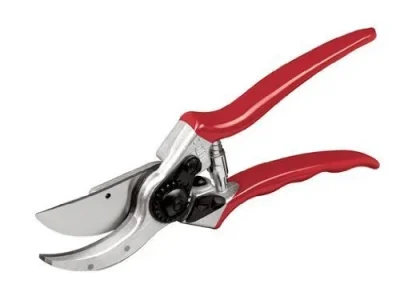Project Report For Pruning Shears
Introduction
Project Report for Pruning Shears is as follows.
Pruning shears are specialty scissors used for pruning woody and flowering plants. They have strong blades that can cut through woody branches, as well as thick handles that make them easy to grasp and operate. Many gardeners have a pair of pruning shears on hand for basic trimming jobs, as well as a pair of lopping shears for greater branch cutting. Pruning shears are commonly found in garden supply and hardware stores, along with protective coverings that may be drawn over their blades for storage.
Pruning shears, like other horticultural tools with blades, require special care. Ideally, the shears should cut easily and neatly to avoid damaging the plants. Pruning shears that are not properly maintained will mangle rather than cut, which is very undesirable. Pruning shears should be sharpened if they get dull, and they should be oiled at the conclusion of the pruning season to preserve the metal in good condition.
Pruning scissors come in a variety of styles, ranging from lightweight flower thinning shears to heavier all-purpose pruning shears. Anvil shears have one sharp blade and one blunt blade, with the branch wedged against the blunt blade during the cutting operation. Parrot-beak pruning shears contain two curved blades at an offset angle to transfer pressure into power, whereas bypass pruning shears have two sharp blades, one of which is curved.

Types of Pruning Shears
- Bypass pruners :- Typically function similarly to scissors, with two blades “passing by” each other to accomplish the cut. At least one of the blades will be curved, with a concave or straight upper blade and a convex or straight bottom blade. Some bypass designs employ a single blade, with the bottom jaw extremely large (like an anvil) but passing through the top jaw. This category contains ratchet pruners, which can handle stems up to two centimetres thick. Bypass pruners are preferred for pruning live wood because they provide a clean cut without crushing.
- Parrot-beak pruners :- Parrot-beak pruners are two concave passing blades that capture the stem between them to cut it. These are only appropriate for narrower stems. Pruning shears were initially used by wealthy landowners and gardeners, but their use soon spread to farmers and the common man. The early pruning shears used in India were made of steel and had a simple design. They had two sharp blades that were held together by a spring mechanism. The handles of the shears were made of wood or plastic, and the blades could be locked in place for safety.
Get Completely Custom Bankable Project Report
Market Potential for Pruning Shears
In 2022, the Pruning Shears Market was estimated to be worth about US$ 68.92 million. Pruning Shears Market is predicted to develop at a CAGR of 3.78%, reaching US$ 89.37 Mn. by 2029.
The market for electric pruning shears is predicted to expand due to a rise in gardening activities worldwide. This is owing to a rise in the amount of time people spend on recreational and leisure activities, which has highlighted gardening. Consumer disposable income is expected to expand, leading to a greater emphasis on modern gardening products, which will boost demand for electric pruning shears. increased penetration of novel products and the number of producers across various business sectors, as well as increased consumer expenditure, are likely to fuel global demand for electric pruning shears.
As disposable income improves, consumers will place a greater emphasis on innovative gardening items, increasing demand for electric pruning shears. Furthermore, the development of innovative and unique products, the recruitment of new producers, and the distribution of things via e-commerce platforms are expected to enhance the electric pruning shears market.
The demand for pruning shears grew in India, local manufacturers started producing their own versions of the tool. Indian pruning shears were made using local materials like bamboo, which was lightweight and easy to work with. The design of Indian pruning shears was also unique, with some models having curved blades to make it easier to reach difficult areas.

